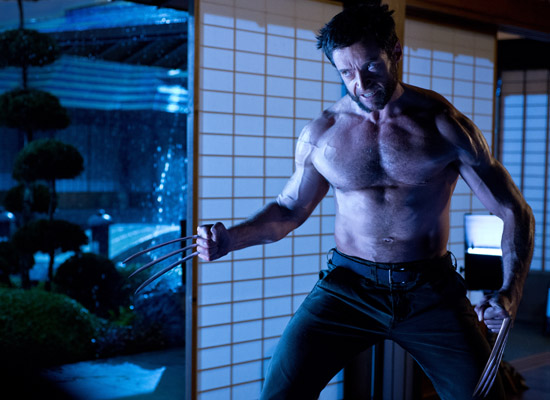Film review | The Wolverine - Hugh Jackman's troubled mutant superhero looks right at home in Japan

Hugh Jackman’s razor-clawed mutant superhero Wolverine proved a fan favourite in the first three X-Men movies, but his first solo turn, 2009’s X-Men Origins: Wolverine, was as clumsy as its title.
Now the bewhiskered battler is back for another lone outing and it’s a huge improvement, an exciting standalone adventure that doesn’t get overly bogged down in superhero mythology but cannily borrows from other genres instead.
And with the story largely taking place in Japan, it’s entirely apt that The Wolverine should be steeped in the spirit of Samurai, Ninja and Yakuza films.

Jackman’s Wolverine, aka James Logan, has his first fateful encounter with Japan as an American prisoner of war in 1945 when he survives the nuclear bombing of Nagasaki and saves the life of young Japanese officer Yashida.
Skip six or so decades and Yashida, now a dying billionaire industrialist, sends an emissary - Rila Fukushima’s sassy redheaded sword-wielding ninja chick Yukio - to the wilds of Alaska to track down the reclusive Wolverine and bring him back to Japan for one last farewell.

Of course, the goodbye proves far from straightforward and after some skulduggery involving Yashida’s legacy, Logan finds himself on the run with the tycoon’s beautiful granddaughter and heir, Mariko (Tao Okamoto), fending off hordes of Yakuza gangsters and ninja warriors at almost every turn.
These scenes of combat and flight are terrific, with the film’s standout moment coming when Logan and one of his assailants come to grips atop a hurtling bullet train. Fights on the roofs of speeding trains are a cinematic cliché, but the giddying velocity of the 200 mph Japanese train allows director James Mangold to give the scene a uniquely thrilling momentum.
Get the What to Watch Newsletter
The latest updates, reviews and unmissable series to watch and more!
Things slow down in the movie’s closing stages, unfortunately, and its climax is yet another wearyingly protracted comic-book slugfest. By then, however, Mangold and his team have probably down enough things right to retain the viewer’s goodwill.

And it’s the Japanese setting (derived from the film’s source, a four-issue comic-book series by Chris Claremont and Frank Miller) that turns out to be their trump card, supplying the film with exotic locations and giving Wolverine the aura of the existential hero of a Samurai Western as he grapples with questions of guilt and mortality.
Happily, Jackman’s protagonist isn’t exclusively a troubled loner and Japan also provides him with a beguiling love interest in Okamoto’s drop-dead gorgeous heiress and a captivating foil in Fukushima’s drop-dead cool warrior. No word yet on whether Jackman and the latter will enjoy further screen adventures together but for a clue to Wolverine’s next exploits stick around through the credits for a teaser for next year’s X-Men: Days of Future Past.

In cinemas from Friday 26th July.
https://www.youtube.com/watch?v=g7kdUy5_WlI
A film critic for over 25 years, Jason admits the job can occasionally be glamorous – sitting on a film festival jury in Portugal; hanging out with Baz Luhrmann at the Chateau Marmont; chatting with Sigourney Weaver about The Archers – but he mostly spends his time in darkened rooms watching films. He’s also written theatre and opera reviews, two guide books on Rome, and competed in a race for Yachting World, whose great wheeze it was to send a seasick film critic to write about his time on the ocean waves. But Jason is happiest on dry land with a classic screwball comedy or Hitchcock thriller.











